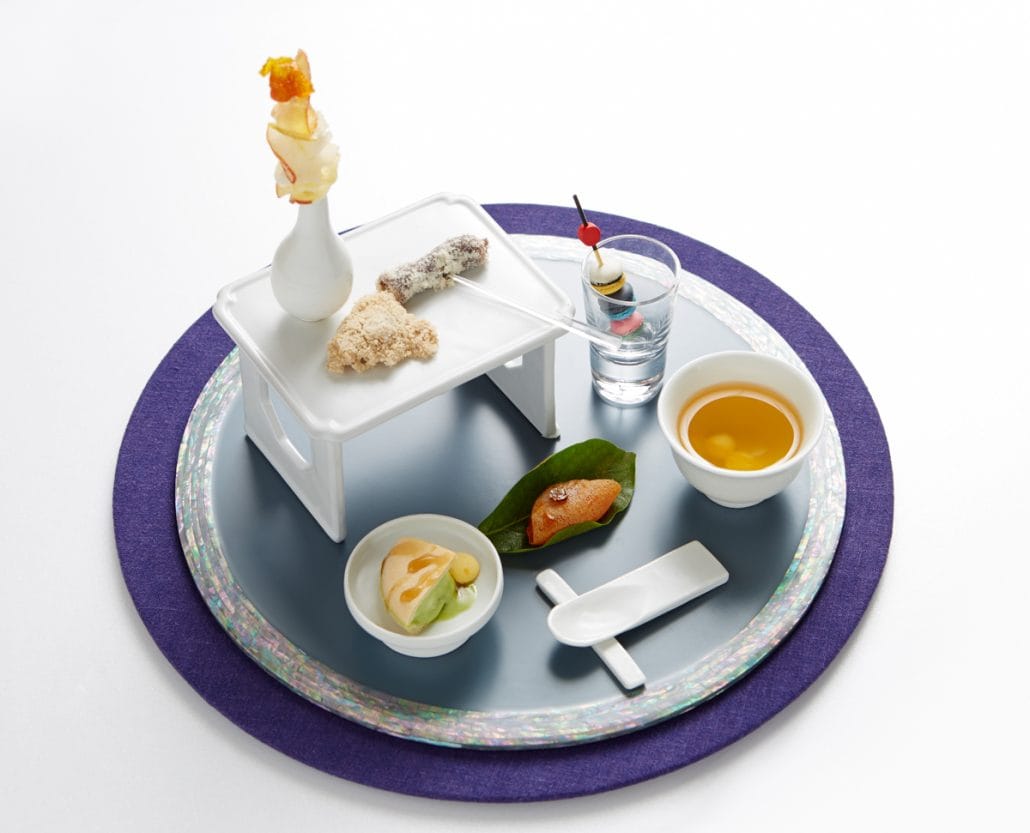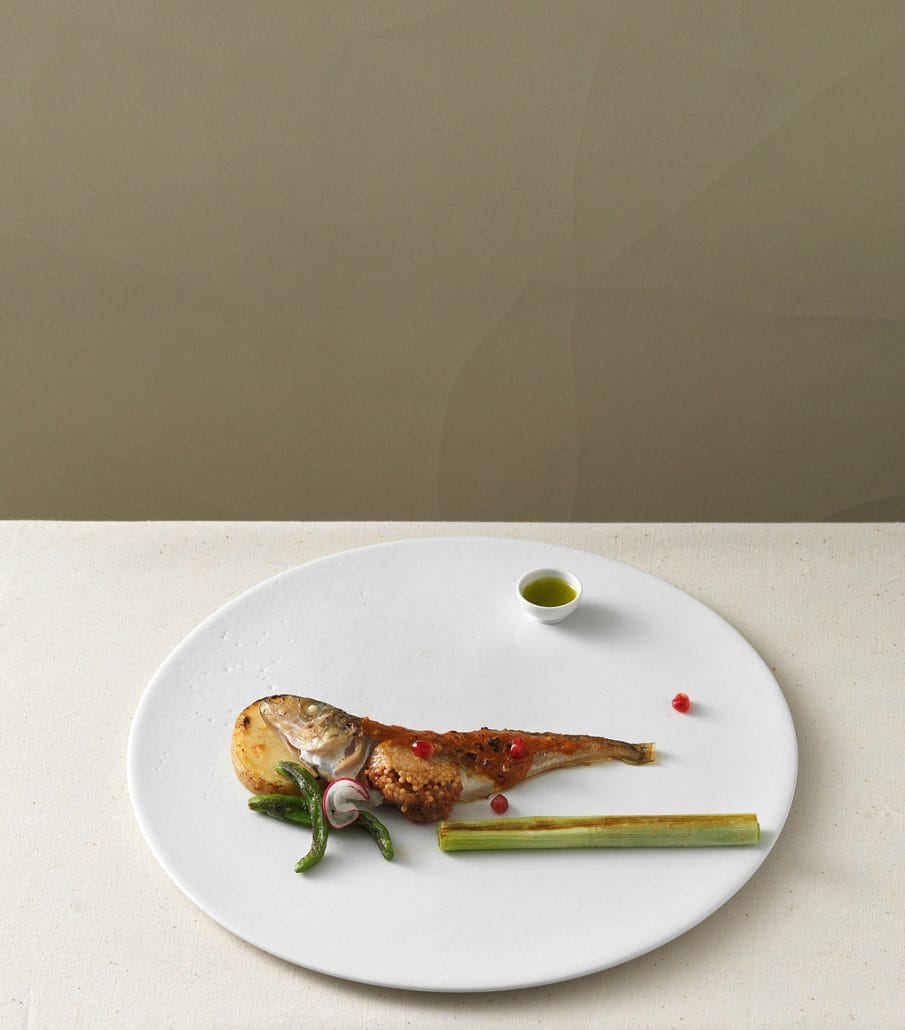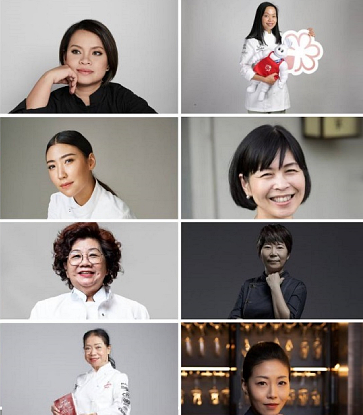Lee Jong Guk is widely regarded as a pioneer of modern Korean haute cuisine. From the beautiful morsels of amuse bouche presented on delicate white porcelain vessels to the individual soy sauce brushes made from freshly-picked pine needles, his food exudes style and elegance. The inventory in the 24 refrigerators at his private residence in Seongbuk-dong–one of the most exclusive residential areas in Seoul– includes all manner of pickled vegetables, kimchi, aged soy sauce, salted fish, and fermented seafood, all made from scratch. It is an impressive testament to his lifelong obsession with food and cooking which he got from his late mother. The following is a one-on-one with the culinary mastermind of ‘Gotgan,’ which received two Michelin stars in the Michelin Guide Seoul 2017.

How did your journey in the kitchen begin?
I started cooking when I was very young. I was fascinated by everything related to food and the kitchen became my favorite playground. My first-ever teacher was my mother. She taught me the fundamentals of cooking. As for the style of food I’m doing now, I’ve been doing it for 20 years. I’ve seen quite a bit of this world and I’ve eaten just as much food – in this respect, I’d say the whole world was my teacher. Like any other creative endeavor, cooking is about making beautiful things and using the ingredients people eat every day to create something new still excites me and inspires me every time.
Out of all the things your mom made you when you were growing up, what do you miss the most?
I used to hate it, but on rainy days, my mother would pull out an entire head of kimchi from the pot and make her kimchi gukbap(kimchi soup with rice). It’s funny how something I used to hate so much can be the source of such intense nostalgia. I think our favorite food changes throughout the course of our lives depending on the different phases we go through.
If there is one thing your mother taught you about cooking, what would it be?
Regard for the people I am cooking for. My mother’s food was all about love and care for her people. It is something I always tell my students as well. No matter how incredible a recipe is, without regard for those who will be eating it, it is dead food to me.

Where do you get your ideas from?
I change my menu frequently – my students often tell me they have to work really hard to keep up. Food changes according to season and time and place. Naturally, I am inspired by many things when creating a menu. For example, I always take into consideration the personality, the character and the personal taste of my guests when I entertain at home. When I am cooking for foreign clients, I try to showcase both traditional and contemporary cooking techniques while displaying the beauty of local ingredients in their natural form as well as the elegance of Korean ceramic ware.
In recent years, I’ve been inspired by the changing seasons. For example, I love playing with season-specific scents: the delicate floral freshness of plum blossoms in the spring and the earthy, smoky, woody aroma of mushrooms in the autumn. For me, Korean food is a multi-sensory experience and I like to create a story—from the amuse bouche to the dessert—that comes together organically under a specific theme.

Many are hoping that the launch of the Michelin Guide Seoul will change the way people perceive Korean food around the world. What are your thoughts?
Through all ages of history, everyday food and haute cuisine have co-existed – as they do today. While many find it okay to pay a hefty sum for a Western-style fine dining meal, there is still an underlying notion that Korean food shouldn’t be expensive. Many people still equate local food with ordinary “everyday food.” People call for restaurants to use locally produced ingredients and yet they complain that food is too expensive, forgetting that oil pressed from local sesame seeds or fresh produce sourced from local farms mean higher food costs. That mentality has to change now.
Also, chefs need to exert themselves more than ever before. Korea needs more chefs who are dedicated to making food that reflects their own style and personality. Just as important is the search for chefs who are currently doing that.
You travel often. As a chef, what do you look for when you are on the road? What goes through your mind?
I am always amazed by the variety of ingredients that exist out there. The range of produce can vary drastically depending on a country’s geography and climate. I still find it fascinating.
The more I see, the more I appreciate the traditions of Korean cuisine are. Our ancestors had the wisdom to make something special out of something quite ordinary. Their insight, their appreciation of taste and flavor that allowed them to create incredible harmony using seasonal ingredients are still very much relevant to this day.

Do you have any advice for the young chefs out there?
Something I always tell my students is that cooking is neither terribly difficult nor easy. However, food is like culture – the more you experience it, the more refined one will become. Refrain from blindly replicating a dish made by some world famous chef. Let your own experience and your own judgement lead the way. Let your own philosophy, your own personality and your own sensibility shine through. Fall in love with ingredients. Use the ingredients as a soundless language to genuinely connect with people.
If you enjoy what you do, it will show in the food and the customers will leave satisfied. More than anything, I want the chefs out there to be better than I am. It is important to keep the traditions alive, but just as important to make food that reflects the present. Food must always evolve.

Lee Jong Guk’s Winter Fish Recipe
Pan-Fried Sandfish with Sea Urchin Glaze and Seared Green Onions
Ingredients:
3 whole sandfish with roe
2 stalks of green onions
1 potato
100g sea urchins
½ teaspoon of green plum extract
1½ tablespoon of sesame oil
1 tablespoon of perilla seed oil
Salt
Chili flakes
How to:
- Remove fins and rinse fish under cold water.
- Cut potato in half and green onions into the length of the fish, head down.
- Heat up a frying pan and drizzle with 1 tablespoon of sesame oil and 1 tablespoon of perilla seed oil. Gently fry the fish on each side over medium heat. Add the green onions to the pan and let it sear in the fish oil until fragrant and golden brown. Remove fish and green onions. Lightly season with salt.
- Add steamed potato halves into the same pan and let it fry in the fish oil until golden brown. Season with salt.
- Prepare the glaze by mashing sea urchins with ½ teaspoon of green plum extract, 2 pinches of salt and ½ teaspoon of sesame oil. Brush the top side of the fish with the glaze and place under the broiler until lightly seared on the surface.
- Sprinkle the fish chili flakes according to taste.
- Arrange potatoes, fish and green onions on a plate.
- Serve with perilla leaf-infused oil or any other herb-infused oil that complements white fish.
Published 2016.12.03















